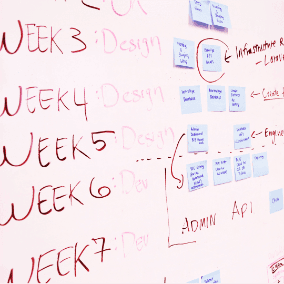
What is a Mid-Cycle Marketing Email?
A mid-cycle marketing email is an email sent to prospects who are already aware of your brand or product but haven’t yet made a purchase or taken the desired action. Unlike introductory emails that introduce your brand or closing emails that aim to convert leads, mid-cycle emails focus on nurturing relationships, providing value, and guiding prospects further along the buyer’s journey. These emails are essential for keeping your leads engaged and helping them make informed decisions.
Now, using an AI Email Marketing Agent, mid-cycle marketing emails can be efficiently automated. It can automatically create and send emails to target customers based on a schedule, without any manual intervention.
The Purpose of Mid-Cycle Marketing Emails
The primary goal of a mid-cycle marketing email is to move prospects from awareness to consideration. They are designed to:
- Provide additional insights or educational content
- Reinforce your brand’s value proposition
- Build trust and credibility
- Encourage engagement through clicks, downloads, or webinar sign-ups
By strategically sending these emails, businesses can maintain communication without overwhelming the lead, ensuring higher engagement rates and better conversion opportunities.
When to Send Mid-Cycle Emails
Longer Sales Cycles: They are particularly effective for products or services that require more time and consideration before a purchase is made.
Between Major Campaigns: Mid-cycle emails serve as important “middle funnel” touchpoints to maintain contact after initial engagement and before a significant offer.
Examples of Mid-Cycle Marketing Emails
Mid-cycle emails often include content that helps prospects evaluate your offerings. Common examples are:
- Case Studies: Showcasing real-life success stories to demonstrate product impact
- Whitepapers or Guides: Offering detailed insights related to the prospect’s interests
- Tips and Best Practices: Sharing actionable advice relevant to your product or industry
- Webinar Invitations: Encouraging deeper engagement and interaction
- Product comparisons: Offering detailed information to help customers compare options.
- Educational content: Providing tutorials, guides, or insider tips.
These emails serve as gentle nudges that keep leads informed and engaged, increasing the likelihood of eventual conversion.
Best Practices for Crafting Mid-Cycle Emails
To maximize the impact of mid-cycle marketing emails, consider the following strategies:
- Segment Your Audience: Send targeted content based on previous interactions and behavior.
- Personalize Your Messaging: Include the recipient’s name and relevant context to make the email more engaging.
- Provide Clear Value: Offer useful insights, resources, or tips rather than generic sales content.
- Use Strong CTAs: Guide prospects toward the next step in the buyer’s journey, such as downloading content or signing up for a demo.
- Test and Optimize: Experiment with subject lines, content format, and sending times to maximize engagement.
Why Mid-Cycle Emails Matter in Marketing
Mid-cycle marketing emails play a crucial role in lead nurturing and conversion optimization. By providing timely and relevant content, they help maintain interest, reduce drop-offs, and build stronger relationships with potential customers. Businesses that use mid-cycle emails strategically often see higher engagement rates, improved lead quality, and ultimately, increased sales.

Recommend Reading
- What Is a Vertical AI Agent? Definition, Examples, and How It Works
- Inferred Sentiment in AI Stock Analysis: The Secret to More Accurate Predictions
- Beyond Fundamentals: Combining Event Tracking with AI Investing Tools
- From Idea to Launch: Using AI Agents to Create a Complete Brand Identity
- How to Build a Brand Marketing Strategy with AI (Step-by-Step Guide)
Recommend AI Automation Templates




